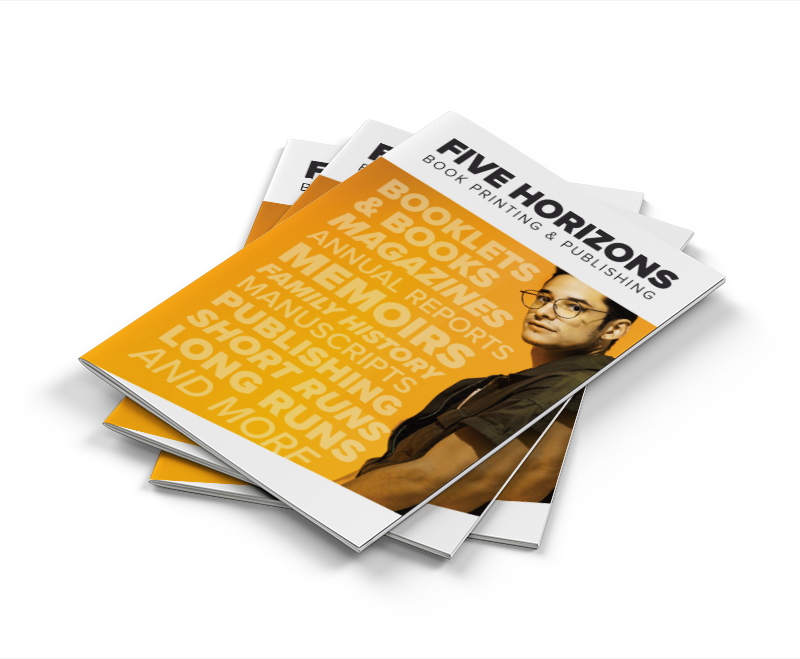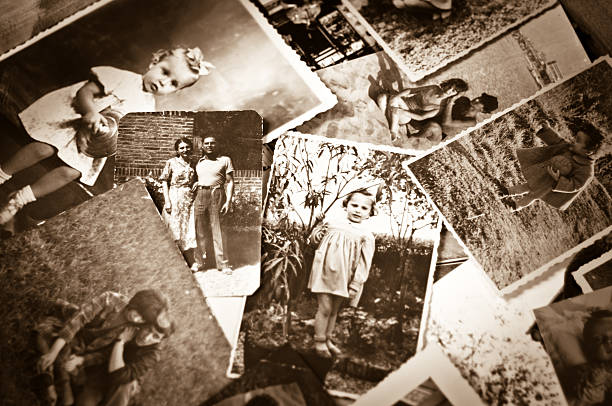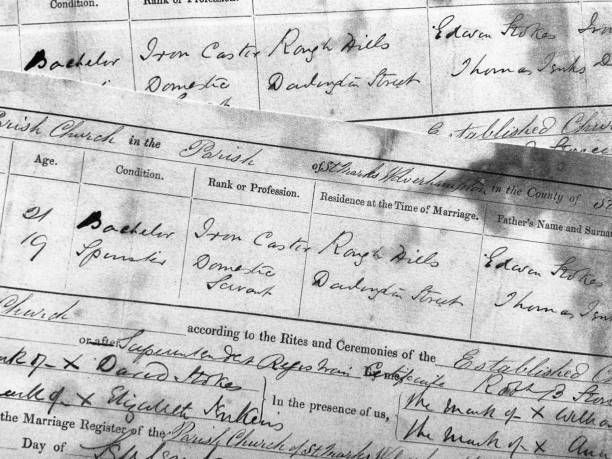






When it comes to printing family history books, choosing high-quality binding is crucial. Quality binding ensures that your family history books not only look professional but also withstand the test of time as treasured keepsakes for future generations. Binding plays a significant role in preserving the memories and stories of your family, making it an essential consideration in the printing process. By understanding the importance of quality binding, you can ensure that your family history books are visually appealing, durable, and able to be shared and cherished for years to come.
When it comes to printing family history books, it’s important to understand the various binding options available. Quality binding not only enhances the visual appeal of your books but also plays a crucial role in preserving your family’s precious memories for future generations. Let’s explore the different binding methods and their significance in the context of family memories.

Perfect binding is a commonly used method used when printing family history books. It involves gluing the pages together and attaching them to a cover, creating a sleek and professional finish. This technique is particularly suitable for larger books and offers durability to withstand frequent handling. However, when considering binding options, it’s essential to take into account the size, design preferences, and intended use of your family history book.
In addition to perfect binding, other methods like spiral binding and saddle stitching can be more appropriate for smaller booklets or when a specific aesthetic is desired. Spiral binding allows for easy flipping of pages and offers flexibility in book layout, while saddle stitching involves folding the pages and securing them together with staples. Choosing the right binding method ensures that your family history book is not only visually appealing but also functional and user-friendly.
Binding goes beyond its aesthetic function; it plays a vital role in preserving your family’s memories and stories. By investing in high-quality binding, you ensure that your family history book is durable and able to withstand the test of time. Sturdy binding methods help protect the pages from tearing or falling apart, ensuring that your family’s cherished memories are preserved for future generations to enjoy.
Moreover, quality binding minimizes the risk of pages becoming loose or disorganized. It keeps your family history book intact and in proper order, allowing for easy browsing and navigation through the generations of family stories. Binding serves as a physical representation of the unity and continuity within your family, encapsulating the importance of shared memories and experiences.
In the next section, we will explore the benefits of engaging with professional printers and the importance of professional layout and design services in creating a polished family history book.

Engaging with professional printers is essential for achieving the best results when printing family history book. Professional printers have the expertise and resources to provide high-quality printing, binding, and finishing services. When it comes to printing your family history book, here are two key aspects to consider: seeking professional layout and design services and effectively communicating your vision to printers.
Professional layout and design services can greatly enhance the visual appeal and overall quality of your family history book. Whether you need assistance with organizing the content, choosing the right fonts and colors, or creating a compelling cover design, professional designers have the skill and experience to bring your vision to life. Consider seeking professional layout and design services if:
Using a simple word processing program such as Microsoft Word may not be enough for a robust, overall design. When tracing your family ttree, to incorporate old photos or priceless photos that need to be brought in with the highest resolution possible, a more advanced program like InDesign or Illustrator may need to be utilised. When creating diagrams for family trees, or scanning in images to the interior pages, the highest quality PDF File is required for the best possible print.
Clear communication with printers is crucial to ensure that your family history book turns out exactly as you envision. Here are some tips to effectively communicate your vision:
By engaging with professional printers and effectively communicating your vision, you can ensure that your family history book is professionally designed, visually appealing, and a true reflection of your family’s stories and memories.
| Benefits | Explanation |
|---|---|
| Expertise and Resources | Professional printers have the knowledge, skills, and equipment necessary to produce high-quality printing, binding, and finishing services for your family history book. |
| Enhanced Design and Layout | By seeking professional layout and design services, you can ensure that your book has a polished and visually appealing look, with attention to detail and a cohesive design throughout. |
| Efficient Communication | Working with printers directly allows for effective communication and collaboration, ensuring that your vision for the book is accurately translated into the final product. |
| Quality Assurance | Professional printers offer proofing and quality control measures to ensure that the final printed book meets your expectations, minimizing errors and potential issues. |
When it comes to printing family history books, choosing the right paper is a crucial decision. The paper selection can greatly impact the overall quality and longevity of your book, ensuring that it remains a cherished keepsake for future generations. Consider the following factors when deciding on the perfect paper:
By carefully selecting the right paper for your family history book, you can create a visually stunning and long-lasting masterpiece that will be enjoyed by generations to come.
| Paper Selection Considerations | Recommended Options |
|---|---|
| Paper Quality | Select high-quality paper designed for book printing |
| Weight | Choose a suitable paper weight based on the desired thickness |
| Finish | Consider glossy, matte, or textured finishes based on personal preference |
| Acid-Free and Archival Paper | Opt for acid-free and archival-quality paper for longevity |
In the process of printing your family history book, the choice of page size and book dimensions holds great significance. This decision directly impacts the overall appearance and readability of your book. It is important to consider the optimal page size that suits your content, taking into account the readability of text and the space required for photos and images. Common page sizes include A4, letter-size, or even custom sizes based on individual preferences and requirements.
When it comes to printing photos in your family history book, the quality of the paper used is of utmost importance. The choice of paper can greatly affect how your photos look and endure over time.
One key factor to consider when printing photos is the use of acid-free paper. Acid-free paper is specially designed to resist acidity, preventing yellowing, fading, and deterioration of the images over time. By using acid-free paper, you can ensure that your family photos will retain their visual quality and stand the test of time.
Another important aspect to consider is the opacity of the paper. Opting for a paper with high opacity is recommended as it limits show-through and enhances the readability of the photos. High-opacity paper prevents images from being affected by text or graphics on the reverse side, allowing the photos to be clearly seen and appreciated.
| Benefits of Acid-Free Paper in Photo Printing | Advantages of High Opacity Paper in Photo Printing |
|---|---|
| – Ensures longevity of printed photos | – Prevents show-through of text or graphics |
| – Resists yellowing and fading | – Enhances readability of photos |
| – Preserves visual quality over time | – Allows photos to stand out on the page |

Compiling your family history is an exciting and rewarding endeavor that allows you to uncover the stories, experiences, and connections that make up your family’s unique legacy. To create a comprehensive family history book that will be cherished for generations to come, follow this step-by-step process:
By following this step-by-step process, you’ll be able to compile a comprehensive family history book that celebrates your heritage and preserves the stories and memories of your loved ones for generations to come.
| Steps | Description |
|---|---|
| Gathering Family Stories | Reach out to family members to collect personal stories, memories, and photographs. |
| Conducting Genealogical Research | Dive into genealogical research to trace your family lineage and uncover important details about your ancestors. |
| Organizing Information | Establish a system for organizing and categorizing the gathered family stories and genealogical research. |
| Creating a Narrative | Develop a compelling narrative structure that brings your family history to life. |
| Enhancing with Visuals | Incorporate photographs, documents, and other visual elements throughout your family history book. |
| Editing and Proofreading | Edit the text, check for errors, and seek feedback to ensure a polished final product. |
| Design and Layout | Select appropriate fonts, colors, and graphics for a visually appealing reading experience. |
| Printing and Binding | Choose a reputable printing service and select high-quality paper and binding options. |
When it comes to printing family history books, you have two main options: self-publishing or going through traditional publishing routes. Each method has its own advantages and considerations, so it’s important to carefully evaluate your goals, budget, and preferences before making a decision.

One self-publishing option worth exploring is print on demand (POD). With POD, you can have your family history book printed as individual copies whenever they are ordered, eliminating the need for large print runs and storage. This allows for greater flexibility and cost-efficiency, especially if you have a smaller audience or only plan to print a limited number of books.
Self-publishing provides you with more control over the entire publishing process, from design to distribution. You can choose your own printing and binding options, select the layout and cover design, and determine the pricing and marketing strategies. However, self-publishing also means taking on more responsibilities, such as editing, marketing, and distribution, which can be time-consuming and require additional skills and resources. It’s essential to familiarize yourself with the self-publishing landscape and consider the potential challenges and rewards before proceeding.
Including photographs and images within your family stories adds depth and visual appeal to your family history book. To ensure the best quality prints, scan your photographs at a high resolution and save them in a suitable format. Consult with your printer or a professional scanning service to ensure the images are properly prepared for printing.
The key to creating a visually captivating family history book is finding the right balance between text and imagery. Each photograph or image should complement the accompanying text and enhance the overall storytelling experience. Be mindful of the placement and size of the images to ensure they flow seamlessly and capture the reader’s attention. Visual storytelling is a powerful tool for engaging your audience and immersing them in your family’s history.
When it comes to printing your family history book, the choice of binding is crucial for sharing and preserving your family line stories. Quality binding not only enhances the visual appeal of the book but also ensures its durability and longevity. By selecting high-quality binding options, you can craft a lasting legacy that will be cherished by future generations.
Family history books serve as a bridge between the past and the future, allowing the stories and memories of previous generations to be passed down to subsequent ones. By using quality binding, you can ensure that your family legacy stands the test of time, providing a tangible connection to your ancestors.
High-quality binding options, such as perfect binding or hardcover binding, offer durability and longevity, preserving your family history for years to come. With a well-bound book, you can be confident that future generations will be able to read and engage with the stories that make up your family’s unique heritage.
Binding is not only important in a literal sense for family history books but also holds a symbolic meaning for family unity. Just as the pages of a well-bound book are held together, family members are bound together by shared experiences, traditions, and values.
By using quality binding for your family history book, you can reinforce the concept of family unity. The act of preserving and sharing your family stories through a beautifully bound book sends a powerful message – that your family’s legacy is valuable and worth preserving together.
Through the physical representation of binding, your family history book becomes a testament to the bond that holds your family together, celebrating your shared heritage and nurturing a sense of connection among family members.
Investing in quality binding for your family history book not only ensures its longevity but also symbolizes the enduring strength and unity of your family. By choosing high-quality binding options, you can share and preserve your family line stories, creating a lasting legacy for future generations to cherish.
| Benefits of Quality Binding | Symbolism of Binding for Family Unity |
|---|---|
| Enhances durability and longevity of the book | Reinforces the concept of family unity |
| Preserves family stories for future generations | Sends a powerful message about the value of family |
| Creates a tangible connection to your ancestors | Celebrates shared heritage and traditions |
The cover design of your family history book plays a crucial role in grabbing the reader’s attention and creating a lasting impression. A visually appealing cover can evoke emotions, spark curiosity, and make the book more memorable.
Visual appeal is essential when it comes to designing the cover of your family history book. A well-designed cover can capture the essence of your family’s history and convey its significance to the reader. By using captivating images, meaningful typography, and harmonious color schemes, you can enhance the visual impact of your book cover.
When readers glance at your book cover, you want them to immediately recognize the essence of your family’s history and feel compelled to explore further. Visual appeal can leave a lasting impression, making your family history book more memorable and increasing the likelihood that readers will recall and share your family’s stories with others.
Creating a polished end product for your family history book requires careful consideration of several cover design elements:
By carefully considering these cover design elements, you can create a polished end product that accurately represents your family’s history and entices readers to explore the pages within.
Next, we will delve into the step-by-step process of writing, assembling and printing family history books, ensuring that you create a meaningful and well-organized legacy for future generations.
Creating a family history book is a meaningful way to preserve your family’s legacy and share it with future generations. It allows you to document and celebrate your family’s unique stories, traditions, and experiences. Whether you’re a seasoned writer or new to the craft, here are some helpful tips for writing and assembling a family history book that will captivate readers and stand the test of time:
By following these tips, you can create a family history book that not only honors your family’s legacy but also educates, entertains, and inspires future generations.
In conclusion, the importance of high-quality binding cannot be emphasized enough when printing family history books. By choosing quality binding options, you can ensure that your family’s stories and memories are preserved and presented in the best possible way.
High-quality binding, be it Soft or Hardcover Books, not only enhances the durability and longevity of your family history book but also adds a touch of professionalism and elegance. It protects the pages from wear and tear, ensuring that the book can be enjoyed by future generations for years to come.
Your family history book is more than just a collection of stories and photos. It is a legacy that represents your family’s unique journey and heritage. By investing in the best presentation through high-quality binding, you are acknowledging the significance of your family’s history and ensuring that it is given the respect and attention it deserves.
Preserving your family history is a meaningful endeavor that allows you to connect with your roots and share your heritage with others. By choosing high-quality binding, you are not only preserving your family’s stories but also creating a beautiful and enduring keepsake that can be passed down through generations. So, don’t compromise when it comes to binding and printing family history books. Give it the best presentation possible, and let your family’s legacy shine.
Copyright © 2025 Five Horizons. All Rights Reserved.